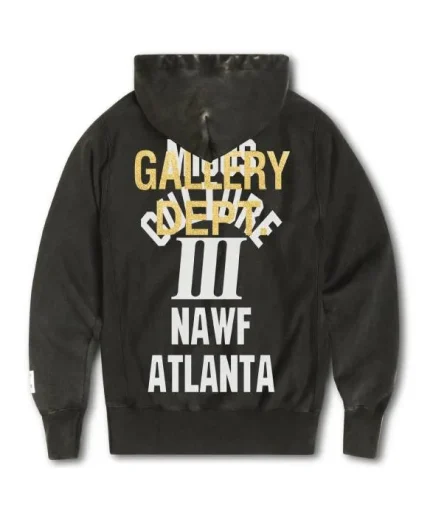Collaborations that Changed the Game: BAPE x Adidas, Supreme, and More
In the fast-moving world of streetwear, few strategies generate buzz and brand longevity quite like the right collaboration. For A Bathing Ape (BAPE), collaborations aren’t just marketing stunts—they’re cultural moments. From Adidas to Supreme, Marvel to Dragon Ball Z, BAPE has consistently used collaborations to elevate its brand, cross into new markets, and cement its place at the center of the streetwear universe. These strategic partnerships not only drove sales but also helped shape the DNA of modern hype culture.
Here’s a closer look at the collaborations that changed the game for BAPE—and for the entire fashion industry.
BAPE x Adidas: Streetwear Meets Sportswear
The BAPE Clothing x Adidas partnership was a landmark collaboration that blended two titans of their respective spheres: BAPE’s graphic-heavy, street-savvy aesthetic and Adidas’s global influence in athletic wear. This relationship helped blur the line between performance sportswear and luxury street style.
The most iconic pieces? The BAPE x Adidas NMD and UltraBOOST sneakers. Decked out in BAPE’s signature ABC camo, these kicks dropped to overwhelming demand, instantly selling out and flooding the resale market. The collaboration also included tracksuits, cleats, and outerwear, all infused with the bold, militant energy that defines BAPE’s look.
This partnership wasn’t just a win for aesthetics—it marked a turning point where streetwear officially entered the sneaker mainstream, opening the door for later collabs from the likes of Yeezy and Fear of God.
BAPE x Supreme: When Legends Collide
In the world of hype, few names carry as much weight as BAPE and Supreme. Though their aesthetics differ—BAPE leans colorful and maximalist, Supreme more minimal and skate-rooted—their 2002 collaboration is legendary for bringing together two streetwear powerhouses at the peak of their cultural cool.
The capsule was small, exclusive, and is now nearly impossible to find on the resale market. It featured graphic tees, camo-infused designs, and co-branded logos that felt rebellious and synergistic. While the brands haven’t released another collab since, this single drop remains a holy grail for collectors and a defining moment in streetwear history.
Beyond product, the collaboration proved something bigger: that two brands with cult followings could join forces without compromising their core identity, setting a precedent for future mega-collaborations.
BAPE x Nike (Unofficially): The Bapesta Story
Though not an official collaboration, the Bapesta sneaker is arguably one of the most iconic “collabs” in streetwear lore—because of how it reinterpreted (and some would say parodied) Nike’s Air Force 1 silhouette. The Bapesta, introduced in the early 2000s, replaced the swoosh with a shooting star and came in patent leather colorways that were bolder and glossier than anything Nike had done at the time.
The sneaker was embraced by hip-hop artists like Pharrell, Kanye West, and Lil Wayne, making it a symbol of luxury and rebellion. Its success—and the legal grey area it inhabited—forced major brands to rethink intellectual property and fueled the trend of designer-streetwear crossovers.
The Bapesta’s influence remains massive, leading to eventual reconciliations and nods from Nike’s own designers years later.
BAPE x Marvel, Star Wars, and Pop Culture Titans
BAPE was one of the first streetwear brands to treat entertainment franchises as legitimate collaborators rather than licensing partners. Its collections with Marvel, Star Wars, SpongeBob SquarePants, and later Dragon Ball Z and Naruto weren’t just merch—they were fashion statements.
In each case, BAPE infused its visual identity—camo, Baby Milo, ape heads—into the pop culture imagery, making the items feel both collectible and wearable. These collabs introduced BAPE to younger audiences and international markets, expanding its reach and appeal far beyond traditional streetwear fans.
Today, nearly every streetwear brand partners with entertainment IP, but BAPE helped pioneer the blueprint.
BAPE x Comme des Garçons: High Fashion Meets the Streets
In 2012, BAPE collaborated with Comme des Garçons, a revered name in avant-garde fashion. The result was a minimalist, black-and-white capsule collection that stood in stark contrast to BAPE’s usual colorful designs.
This partnership helped validate streetwear as a legitimate part of the high-fashion conversation. It proved that BAPE’s identity was versatile enough to evolve and mature while still maintaining its unique flair.
Since then, BAPE has engaged in similar upscale collaborations, including with Coach and Sacai, further bridging the gap between luxury and streetwear.
BAPE x Undefeated and Stüssy: Streetwear’s Inner Circle
Collaborations with fellow streetwear giants like Undefeated and Stüssy demonstrated BAPE’s ability to play well with others in the same space. These capsules weren’t about expansion—they were about community.
The designs often combined logos, taglines, and recognizable aesthetics from each brand, speaking directly to core fans. These drops reinforced the idea of a tightly knit streetwear culture where collaboration is both creative and respectful—competitive yet united.
The Long-Term Impact
What makes BAPE’s collaborations so influential isn’t just the names involved—it’s the way they were executed. BAPE treats collaborations as a celebration of cultural intersections, often dropping products with little warning, in limited quantities, and with strong thematic storytelling.
This approach changed the game. It helped transform streetwear from niche apparel to mainstream phenomenon. It redefined how brands view co-branding—not as an afterthought, but as a core part of identity. And perhaps most importantly, it turned product drops into cultural events.
Conclusion
BAPE’s collaboration history reads like a roadmap of modern streetwear: strategic, daring, and deeply plugged into culture. From Adidas to Supreme, Marvel to Comme des Garçons, these collabs helped shape what hype looks like today. They weren’t just about clothes—they were about legacy, influence, and rewriting the rules of fashion partnerships.

